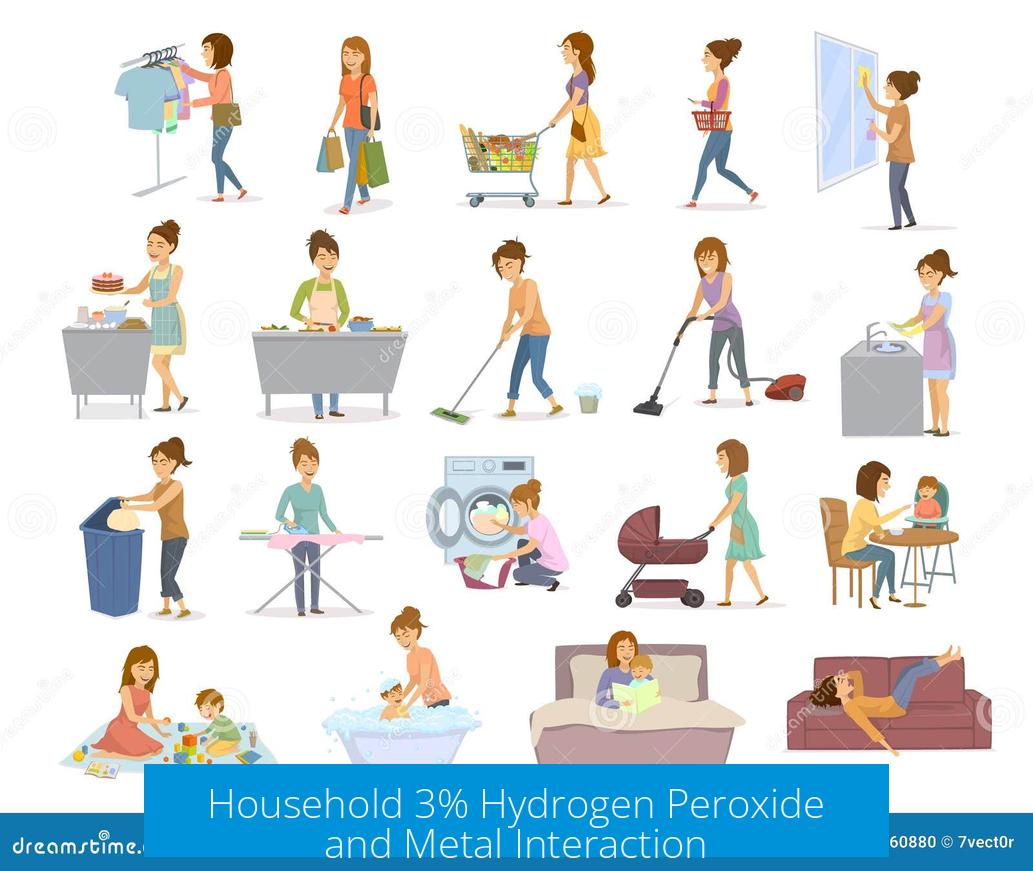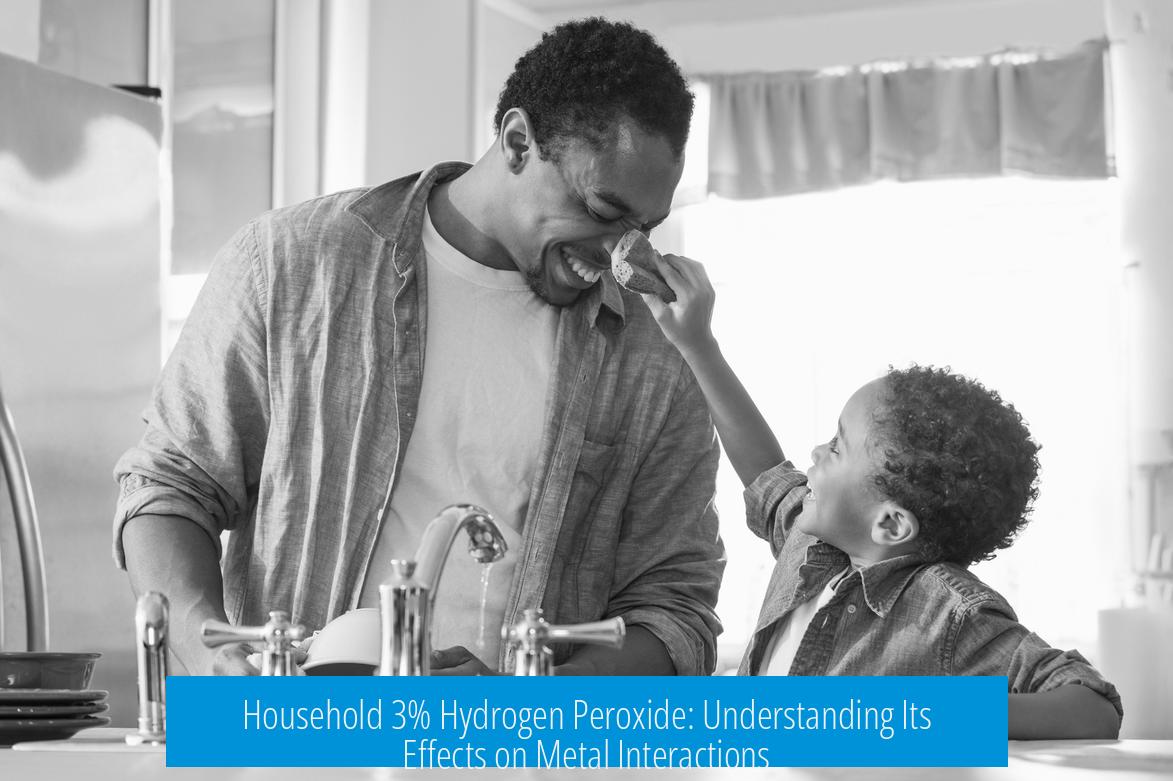Household 3% Hydrogen Peroxide and Metal Interaction
 Household 3% hydrogen peroxide interacts with metals primarily by accelerating oxidation, leading to rapid rust formation and mild corrosion. It releases oxygen, which speeds up iron’s reaction with moisture and air. This effect happens noticeably on metals like iron and steel, causing rust to appear much faster than under normal conditions.
Household 3% hydrogen peroxide interacts with metals primarily by accelerating oxidation, leading to rapid rust formation and mild corrosion. It releases oxygen, which speeds up iron’s reaction with moisture and air. This effect happens noticeably on metals like iron and steel, causing rust to appear much faster than under normal conditions.
Oxidation and Corrosion Effects
Hydrogen peroxide at 3% concentration acts as a mild oxidizer. When dropped on iron or steel, it speeds up rust formation by providing extra oxygen to the iron’s surface. This results in a faster conversion of iron to iron oxide.
- Rust forms within minutes, unlike the usual extended period in ambient air.
- Corrosion occurs but is less aggressive than with stronger chemicals like bleach.
- Metals may discolor or show surface degradation with repeated exposure.
The oxidation is generally not dangerous but can impair metallic appearance and integrity over time. Using such oxidizers on items like keys or tools is not advisable because discoloration and mild damage may result.
Odor Related to Hydrogen Peroxide and Metal
The smell experienced after applying hydrogen peroxide on metal rarely arises from the metal-peroxide reaction itself. Instead, it typically results from hydrogen peroxide reacting with oils and sweat residues left on the metal from skin contact.
- This chemical interaction produces volatile compounds, such as oct-1-en-3-one.
- These compounds cause a characteristic metallic or sharp odor.
- Cleaning metals thoroughly before contact reduces odor formation.
Safety and Handling Considerations
Household 3% hydrogen peroxide is comparatively safe for casual use with metals but does cause mild oxidation.
- It produces harmless water and oxygen, with no toxic fumes in low concentrations.
- Skin in contact with peroxide and metal residues may feel dry or irritated; moisturizing after use is recommended.
- Scientific studies caution against forced oxidation of metals for purposes like aging, due to possible unforeseen biochemical risks, especially at higher peroxide concentrations or prolonged exposure.
Users should avoid combining peroxide with organic solvents, as dangerous organic peroxides can form, though this is not a concern at household levels.
Chemical Behavior of 3% Hydrogen Peroxide
Hydrogen peroxide primarily decomposes into oxygen and water, without generating strong odors itself. Its oxidative power at 3% is sufficient to accelerate metal rusting but insufficient to cause rapid corrosion seen with stronger oxidizers.
| Property | Effect on Metal | Safety Profile |
|---|---|---|
| 3% Concentration | Speeds rust, mild surface oxidation | Safe with minimal precautions |
| Higher Concentrations | Potential strong oxidation, corrosion | Potentially hazardous, avoid use on metal |
| Combined with Solvents | May form organic peroxides | Hazardous, should be avoided |
Key Takeaways
- 3% hydrogen peroxide accelerates metal oxidation, rapidly forming rust on iron and steel.
- The odor linked to peroxide and metal is mainly caused by reactions with skin oils, not the metal itself.
- Use of 3% peroxide on metal is generally safe but can cause discoloration and mild corrosion.
- Moisturizing after skin contact with peroxide and metal is advisable to prevent drying.
- Avoid forcing metal oxidation with peroxide for aging or experimental purposes due to potential risks.





Leave a Comment